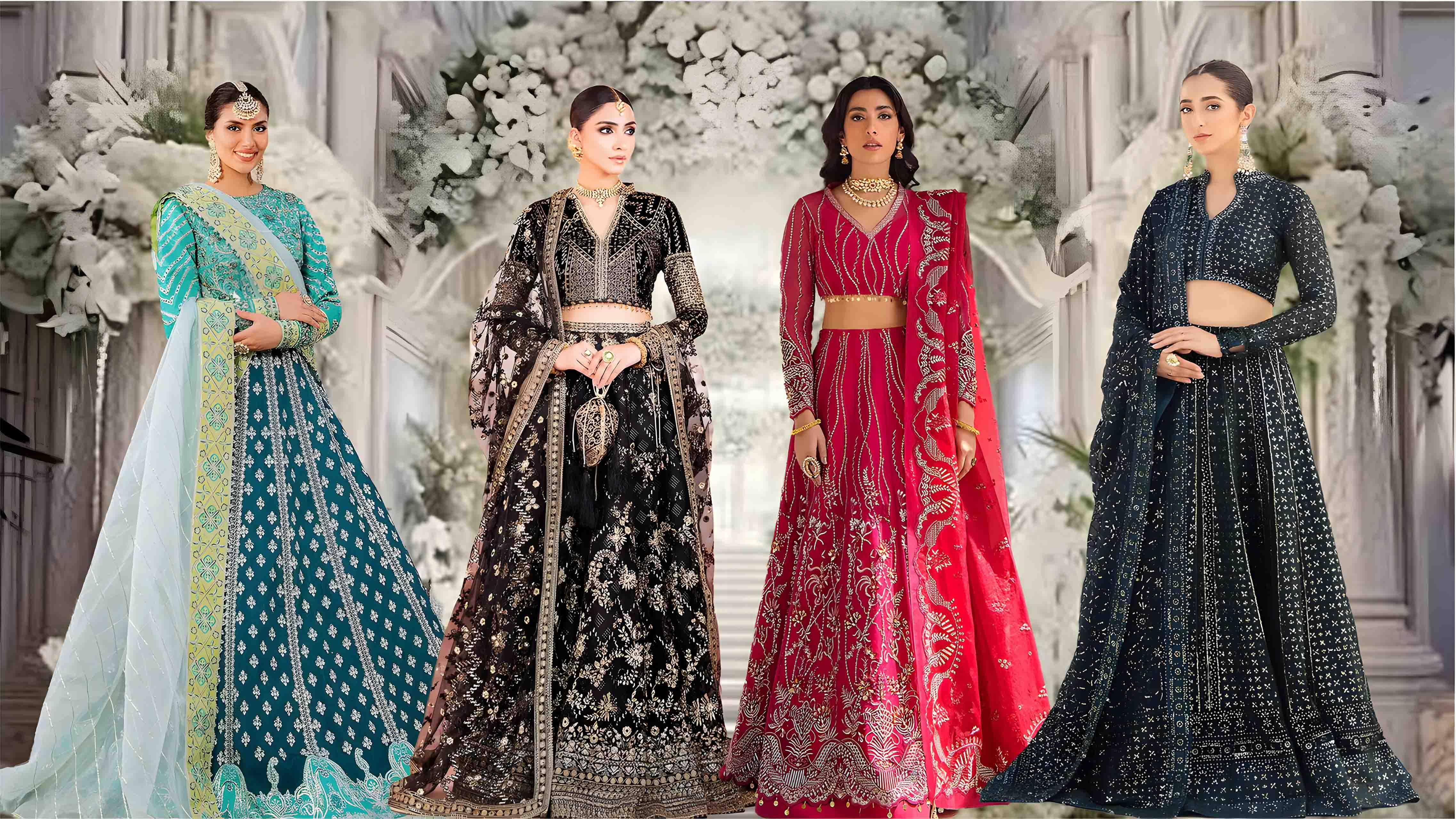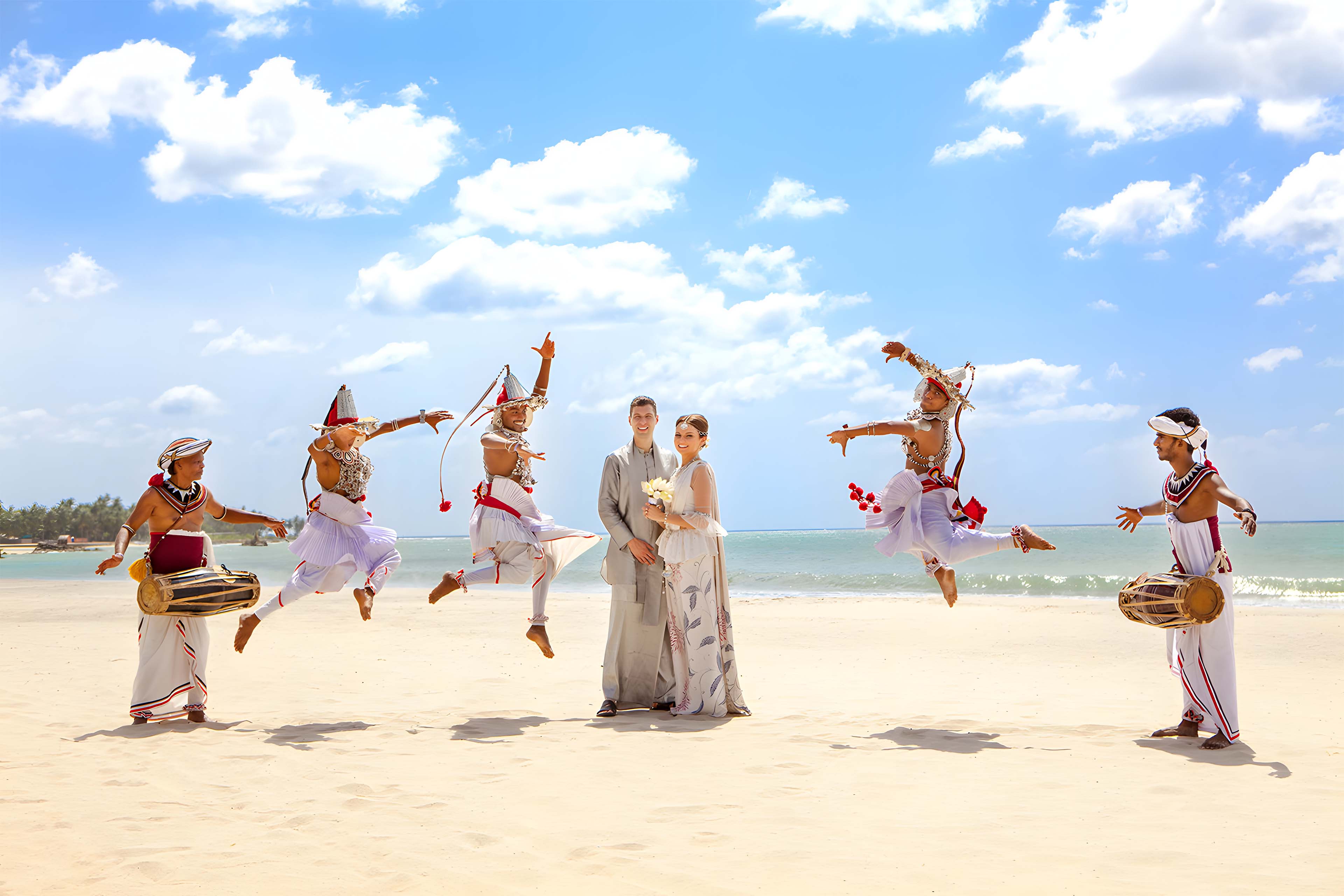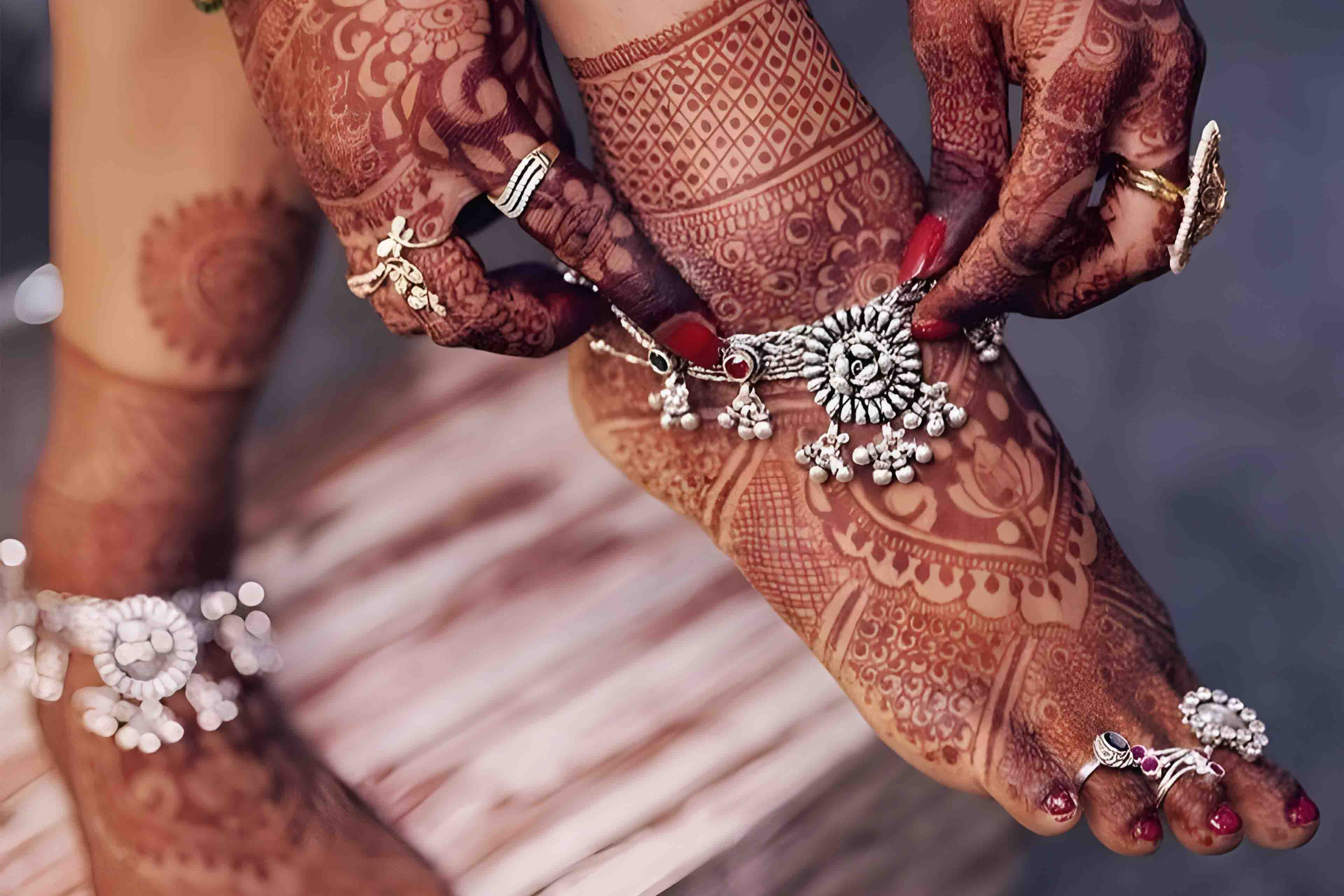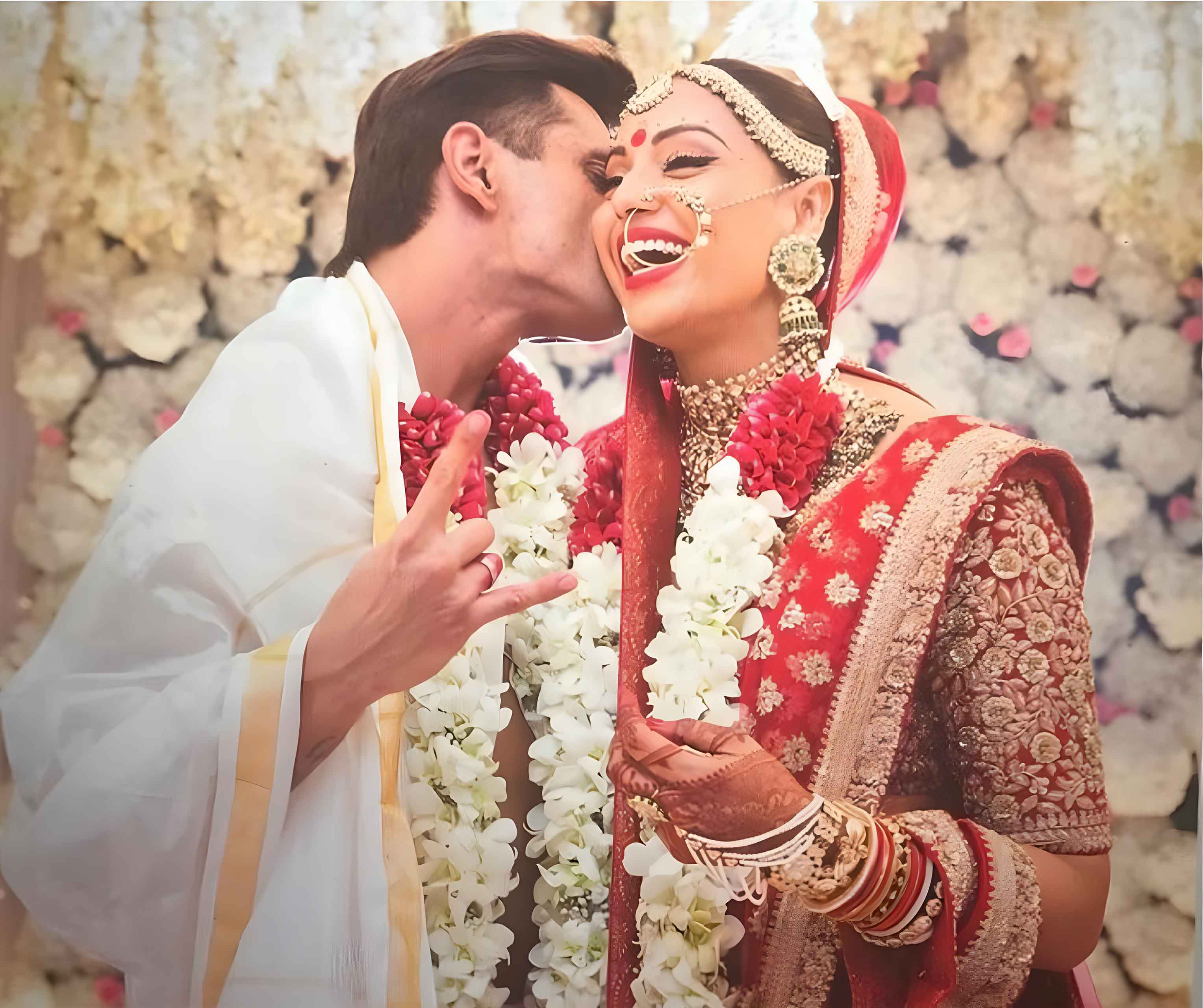Sequins, Shawls & Zero Stress: What to Wear to a Pakistani Wedding
Getting invited to a Pakistani wedding and don’t know what to wear? Whether you're Desi or not, this guide breaks down Pakistani wedding guest dress codes by event—Mehendi, Nikkah, Walima & more—with modern, U.S.-friendly tips. Written with love (and a little sass) by Laali Ladki.

last updated: June 6th, 2025 | 7-minute read
Okay, real talk: getting invited to a Pakistani wedding can feel like you've accidentally RSVP'd to a Bollywood premiere, a couture fashion show, and your cousin's house party—all in one. And if you're frantically googling “Pakistani wedding guest dresses” at 2 a.m. while holding up three outfits to your bedroom wall like a psychic, you’re in the right place. Breathe. We’ve got this.
Welcome to the glamazon jungle that is the Pakistani wedding circuit. It’s colorful, cultural, sometimes confusing (hi, six different events?), and honestly one of the most vibrant experiences you’ll ever be part of. But if you’ve never been to one—or never been to one in the U.S. where vibes, weather, and auntie commentary can vary wildly—you might be wondering: what do I actually wear?
Here’s the deal: You do not need to fly to Lahore or sell a kidney for a designer lehenga. But you do need to know the cultural code—and that’s where I come in. Pakistani weddings aren’t just Indian weddings with different food. They have their own flow, their own traditions, and yes, their own dress game.
This guide is for everyone—from the Desi who's been out of the loop to the non-Desi who's dating someone Pakistani to the friend who's just trying not to show up in white to a Walima (don’t do it). We’re breaking down what to wear, what to avoid, and how to nail the aesthetic without losing your mind—or your savings account.
Also, if you want a breakdown of what each event actually is—like why the Nikkah is different from the Baraat and why the Walima is often a soft launch for muted pastels—you’ll want to read this guide too.
- Section 1: The Wedding Line-Up: A Whole Season of Looks, Comin’ at You
- Section 2: What to Wear for Each Wedding Event (aka Your Closet’s Time to Shine)
- Section 3: Guest Goals: Pakistani Wedding Outfit Etiquette 101
- Section 4: Smart Shopping: Where to Find the Looks Without Booking a Flight to Karachi
Section 1: The Wedding Line-Up: A Whole Season of Looks, Comin’ at You
If you thought a Pakistani wedding was just a one-day affair with biryani and bhangra, buckle up. We’re talking multi-day, multi-outfit, full-on marathon energy. It’s basically Fashion Week, but with aunties, Quranic recitations, and your cousin’s college roommate trying to make a rishta connection by the dessert table.
Here’s a quick cheat sheet of the core events you’ll likely be dressing for—so when your invite says “Join us for Mehendi!” you don’t show up in a tuxedo or worse, jeans. (Yes, it’s happened.)
- Mehendi: This is the unofficial kick-off. Think bright colors, playful fits, flower jewelry, and dance practices that are 30% choreography, 70% chaos. No one is expecting perfection—just participation and color coordination. It’s the most “fun” look you’ll get to pull out, so don’t hold back.
- Nikkah: The religious ceremony. It can happen at a mosque, at home, or even during a separate daytime gathering. The vibe is graceful, spiritual, and modest. Save the sparkly saree for later—this is where soft pastels, full sleeves, and covered necklines take center stage.
- Baraat: Now we’re talking. This is the Big Fat Wedding Moment™—the groom’s grand entrance (sometimes on a horse, no I’m not kidding), the bride’s cinematic walk-in, and more cameras than a red carpet event. Bring your A-game. Embroidery, sparkle, drama—it’s your excuse to wear the outfit that’s been sitting in your closet waiting for a moment.
- Walima: The reception that seals the deal. Typically hosted by the groom’s side, it’s all about understated class. Swap out the sequins for clean tailoring, luxe fabrics, and muted tones. This is where that chic pastel lehenga or elegant saree will shine.
Heads up: Depending on the family’s background, the sequence and styling of these events can vary. For example, Pashtun weddings might lean more traditional and gender-segregated; Sindhi celebrations often dial up the musical elements; Punjabi weddings may bring extra energy (and volume); and Muhajir events can blend modern with deeply conservative customs. If you’re unsure what to expect, just ask—or better yet, create an account on Laali and connect with real folks who’ve been through it all.
.jpg)
Section 2: What to Wear for Each Wedding Event (aka Your Closet’s Time to Shine)
Let’s be honest—figuring out what to wear to each event is basically a full-time job. And if you’ve ever whispered “can I wear this lehenga twice?” to yourself while panic-scrolling Pinterest, I see you. Don’t worry, I’m about to break it down like your bestie in a group chat—minus the unsolicited Zara links.
🟡 Mehendi: Bring the Color, Ditch the Rules
The Mehendi is where the party kicks off—and the unofficial dress code is fun + floral + photo-ready. This is your moment to embrace bold colors, mirror work, tassels, florals, and every shade of marigold that exists.
- What to wear: Lehengas, ghararas, shararas, long flowy kurtis, or even a wide-legged jumpsuit with desi flair. Comfort is key—you’ll be dancing, sitting cross-legged, or being pulled into group TikToks you didn’t sign up for.
- What to skip: All-white (you’ll blend in with the seating cushions), heavy bridal red (don’t be that guest), and anything too stiff to move in.
- Men’s picks: Kurta pajama with a printed vest or a light Nehru jacket. Bonus points for vibrant solids or block prints.
⚪ Nikkah: Soft Elegance, Always Chic
The Nikkah is the religious signing ceremony, and yes—modesty matters here. You want to look put together, not like you just came from an afterparty in SoHo. It's usually a daytime event, so your outfit should be light, respectful, and refined.
- What to wear: Long anarkalis, muted-toned sarees, high-neck maxi gowns with dupattas, or full-sleeved suits. Jewel tones and pastels both work—just keep the bling low-key.
- Modesty tips: Sleeves, covered shoulders, and non-sheer fabrics are the safest bet. Even if you’re not Muslim, it’s good form to respect the setting.
- Men’s picks: Tailored kurta with a crisp waistcoat. Sherwanis can work too if you’re feeling extra—but skip the embroidered lion buttons, please.
.jpg)
🔴 Baraat: Go Big or Stay Home
This is the main shaadi scene, and yes, you’re expected to bring drama—in the best way possible. Think luxe fabrics, bold embroidery, and accessories that make your auntie gasp (in a good way). But remember: sparkle ≠ bridal. The goal is stunning, not stealing the spotlight.
- What to wear: Formal lehengas, statement sarees, embroidered maxi suits, or Indo-western gowns. This is your excuse to wear something that’s been sitting in your closet with tags for two years.
- Styling tips: Pair it with jhumkas, a sleek clutch, and comfortable heels (or platform juttis—you’re welcome).
- Men’s picks: Sherwanis, embroidered kurtas, or tailored jackets with Desi detailing. Add a pocket square if you’re feeling cute.
⚫ Walima: Minimalist Vibes, But Make It Desi
The Walima is the reception—hosted by the groom’s side, and usually more muted and formal. The vibe? Understated elegance. It’s like the Pinterest board version of a wedding: soft pastels, silky fabrics, nothing too loud but everything intentional.
- What to wear: Embroidered sarees, velvet suits, sleek lehengas in dusty rose, ivory, sage or champagne. You’re not trying to go viral—you’re trying to serve quiet luxury with dupatta draping skills.
- Men’s picks: Tailored suits with a Desi twist (think jamawar pocket square or cuff detail), or formal kurtas in muted hues.
And before you scream into your closet, remember: you do not have to buy a new outfit for every single event. Mix and match, accessorize smart, and yes—repeating is allowed. Fashion police do not exist here.
Need help finding the look without blowing your paycheck? The Laali Vendor Directory has stylists, outfit rentals, and boutique recommendations across the U.S. So no, you don’t have to fly to Karachi for a good gharara.
Section 3: Guest Goals: Pakistani Wedding Outfit Etiquette 101
Okay bestie, you’ve got the events down and the outfit inspo bookmarked. But before you step into that shaadi hall ready to slay, let’s talk etiquette—because looking cute is one thing, but looking clueless is a whole different kind of viral.
✨ Color Coding: What to Rock vs. What to Drop
First rule of Pakistani wedding guest club: don’t wear red unless you're the bride or in the inner bridal fam circle. It’s like showing up in a wedding dress to someone else's nuptials—just don’t. You’re there to celebrate, not compete.
Instead, go for jewel tones (think emerald, sapphire, deep purple), rich metallics, or playful hues like teal, mustard, and fuchsia—especially for Mehendi. For Walima or Nikkah, you’ll never go wrong with blush tones, soft neutrals, or deep greens. Just skip all-white unless explicitly told to wear it. And animal prints? Leave the jungle at home.
👗 Traditional vs. Fusion Fits
If you’re wondering whether to go classic Desi or channel your inner South Asian Serena van der Woodsen (a.k.a. fusion fashionista)—you’ve got options. Traditional fits like sarees, lehengas and ghararas are always safe and stunning. But modern guests are also rocking fusion gowns with Desi embroidery, or layering dupattas over sleek jumpsuits.
TL;DR: Traditional shows respect for the culture. Fusion shows creativity. Either is okay as long as it doesn’t look like a Met Gala afterparty misfire.
🧣 Dupatta Decorum (Yes, It’s a Thing)
Listen, I love a breezy wrap moment as much as anyone, but your dupatta isn’t a beach sarong or a TikTok prop. Especially for Nikkah or formal settings, learn the art of the drape. Over one shoulder, pinned across both, or covering your head if needed—make it neat, intentional, and not flapping around like a windshield banner.
👠 Heels vs. Flats: A Footwear Survival Guide
If your shoe choice for the Baraat doesn’t spark at least one “Are you okay?” from your toes by 10 p.m., are you even doing it right? Just kidding (kind of). Go with block heels, wedges, or traditional juttis if you’re dancing. Flats are perfect for Mehendi, but maybe not for that ultra-formal Walima look.
🧠 Watch for Cultural Cues (aka Don’t Be the Headline)
Every Pakistani family is different, but there are some basics:
- Gendered spaces: Some events might have separate areas for men and women—especially in religious or conservative families.
- Prayer breaks: If azaan (call to prayer) plays, pause the music and your Instagram story. It’s a moment of respect.
- Food etiquette: Buffets usually move clockwise. Don’t cut the line. If someone offers you chai, you say yes—always yes.
Still nervous? Don’t be. Pakistani weddings may have their etiquette moments, but at the end of the day, people just want you to show up, look good, and clap on beat. Well... at least try.
.jpg)
Section 4: Smart Shopping: Where to Find the Looks Without Booking a Flight to Karachi
So you’ve figured out what to wear, how to wear it, and how not to offend anyone in the process. Now comes the real challenge: where are you actually getting these outfits from? Don’t worry, I’ve got you. You’re about to get the wedding wardrobe glow-up—without maxing out your AmEx or raiding your nani’s closet.
🛍️ Where to Shop (Yes, In the U.S.)
You don’t have to fly overseas for a decent lehenga—unless you're going for passport stamps over practicality. Stateside hubs like Edison, NJ, Artesia, CA, Devon Avenue in Chicago, and Hillcroft in Houston are overflowing with bridal boutiques and Desi fashion stores. Just don’t go in blind—take screenshots, bring snacks, and mentally prepare for “this one just came from Pakistan” being said a lot.
👗 Rent the Vibe
If you’re not into buying something you’ll only wear once (respect), Laali.co’s Vendor Directory has rental options for everything from lehengas to sherwanis to jhumkas that could double as light fixtures. It’s outfit commitment without the commitment. Try local rental services or even Instagram-based stylists offering curated wedding guest looks in major U.S. cities.
♻️ Closet Remix 101
- Mix + match: Pair an old kurti with a new sharara, or reuse a blouse with a fresh lehenga skirt. Nobody will notice, especially if you switch up your jewelry.
- Dupatta magic: Elevate a basic outfit with a statement dupatta (mirrorwork, embroidery, fringe, sequins—the works).
- Layer like a pro: Add a jacket, belt, or embroidered cape to give last season’s fit a new personality.
⚡ Last-Minute Fixes (Because Procrastination Is Real)
No blouse? Throw on a solid crop top. Need jewelry? Target actually has cute gold-tone hoops that’ll pass in a pinch. Forgot your bangles? Stack mismatched ones—call it maximalist. Pakistani weddings are about the energy, not perfection. (But a well-draped dupatta never hurts.)
Oh, and if all else fails? Ask your bestie, your cousin, or your Desi coworker—they’ve definitely got something fabulous buried in a suitcase. Or just hop on Laali.co and let the directory work its magic.
The Final Look: Wrapping It Up Without Wrinkling Anything
Let’s recap this fashion saga, shall we?
- Mehendi: Bright colors, flowy fits, fun energy. Think dance-floor ready but auntie-approved.
- Nikkah: Modest, graceful, soft tones. Respect the vibe, don’t outshine the moment.
- Baraat: This is your glam hour. Just don’t accidentally wear the bride’s shade of red, okay?
- Walima: Elegant, muted, and chic. Serve that soft-launch energy with confidence.
Here’s the thing: it’s not about perfection, it’s about presence. You’re not expected to show up as a cultural expert or runway model. Just dress with intention, respect the traditions, and enjoy the chaos with an open heart (and a secure dupatta).
Pakistani weddings are bursting with soul—family, food, flair, and the occasional uncle trying to get the DJ to play a qawwali remix. So show up dressed like you mean it. Because honestly? There’s no better way to honor the invitation than arriving styled, comfortable, and ready to celebrate the love.
xoxo,
Laali Ladki
Featured
Desi Weddings
Find Culturally Capable Vendors
You’re not just having a wedding, you’re having a South Asian wedding. From hosting multiple events to incorporating ancient traditions, there’s a lot that will make your wedding unique. With Laali, you can find vendors who get it and have experience making South Asian weddings spectacular!
Connect With Us





Comments (0)
No comments yet. Be the first to comment!